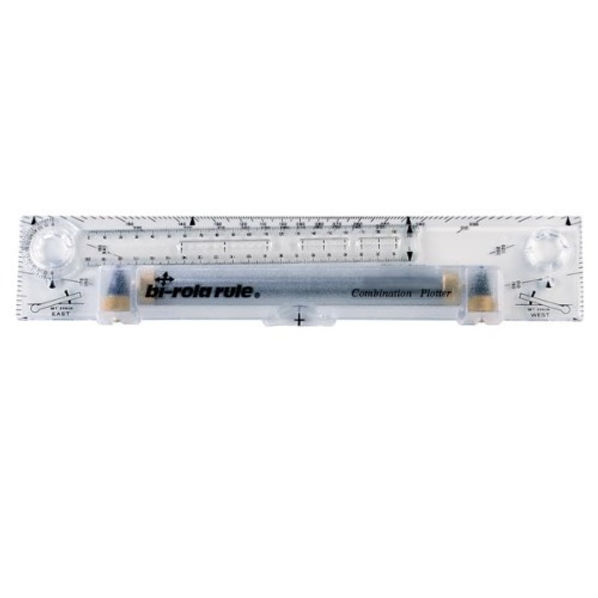Old-School Plotting & Navigation Tools For The Discriminating Mariner – Part II
- business78299
- Oct 22, 2009
- 3 min read
Not as old school as brass dividers and parallel rules, rolling parallel plotters have still been around for my entire seagoing career and are worth consideration. Weems & Plath offer four versions and the first two are included only as a comparison to the latter three, which are truly commercial-grade navigation instruments.
The 3.5″ x 12.5″ rolling plotter…..

and the 2″ x 8″ compact rolling plotter…..

…..may be useful to someone jammed into the cramped pilothouse of a very small vessel, but to me they’re way too lightweight and prone to slippage. The larger one was standard issue to all Coast Guard small boat coxswains of my era and I remember well the frustration of trying to use one while bouncing around in the old 41-foot UTB’s. Not very productive, to say the least. I would occasionally use them, very carefully, on top of the large chart table in the radio watchstander’s room in the station house and managed to get decent accuracy out of them. But I never really trusted them much and preferred the heavier parallel rules.
Then there are the 2-5/8″ x 13-7/8″ Bi-Rola Rule combination plotter…..

and the larger, heavier P.R. 500 rolling plotter, which weighs in at a hefty 1 pound, 10 oz. and measures 3-5/8″ x 19-5/8″.

Finally, we have the Admiralty brass rolling plotter from Blundell Harling of England. 18″ long and made of solid brass and stainless steel, it is said to be tested to roll true to within 1mm over a distance of 2 meters and is the heavyweight champion.

If you’re going to bother to have a rolling plotter, one of these are what you want. The two Bi-rola rules roll on either a fore-and-aft or side-to-side axis and are way heavier than the others with their knurled brass wheels, making them significantly less prone to slipping or being knocked off course by a crease in the chart. Much more user-friendly on the typical chart table. Landfall Navigation has them for $69.99 and $112.99, respectively. The Admiralty brass rolling plotter costs $259.95 from us.binnacle.com. Any of these may seem way too expensive to many of you, but there is another way to look at it. I bought the smaller Bi-rola combination rolling plotter back when I earned very little money ($132.00 a day) as a tug deckineer on a creaky old canal boat back in 1990. Years later I used it to pass the navigation/plotting modules of the 1,600 GRT mate and master tests given at the Coast Guard REC in New York, which required grades of at least 90% to pass. They didn’t, and still don’t, give you any do-overs on the spot if you screw it up. You had to come back on another day and try it again. Accuracy has always been very important when the answer to each question is built upon the answers to the previous questions, and any plotting errors made early on will cascade through the rest of your answers, causing you to go down in flames. Just one missed day’s pay as a licensed mate could easily pay for a whole set of top-of-the-line navigation plotting tools with enough left over for a celebratory dinner and some good beer. Now how much are solid, accurate plotting tools worth to you?
They also see occasional real-world use for laying down permanent course tracklines on our print-on-demand charts and still reside today in a chart table drawer aboard the tug I work on. Whenever I need them for navigating or voyage planning they perform well and yield trustworthy, confidence-inspiring results. What more do you want?




Comments